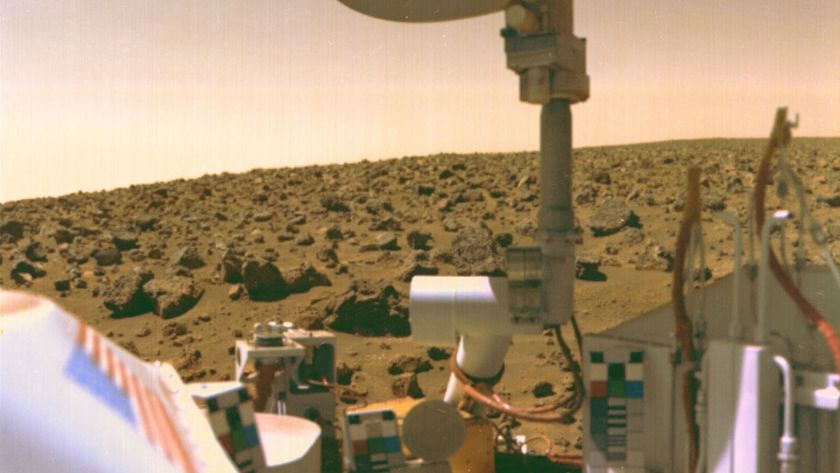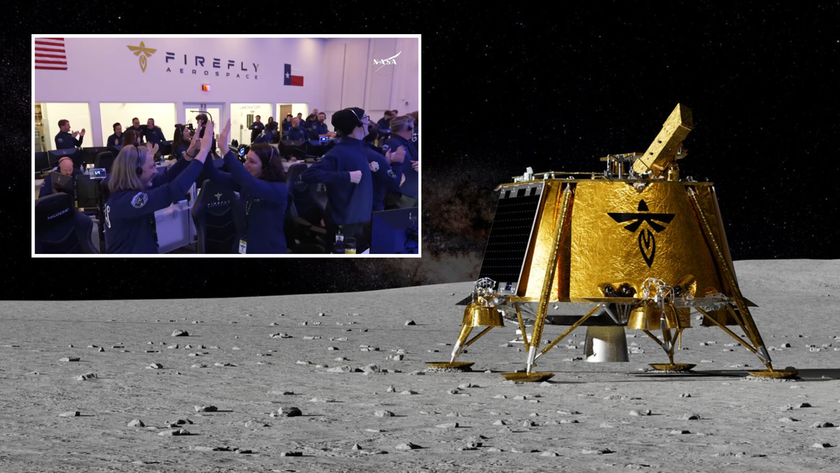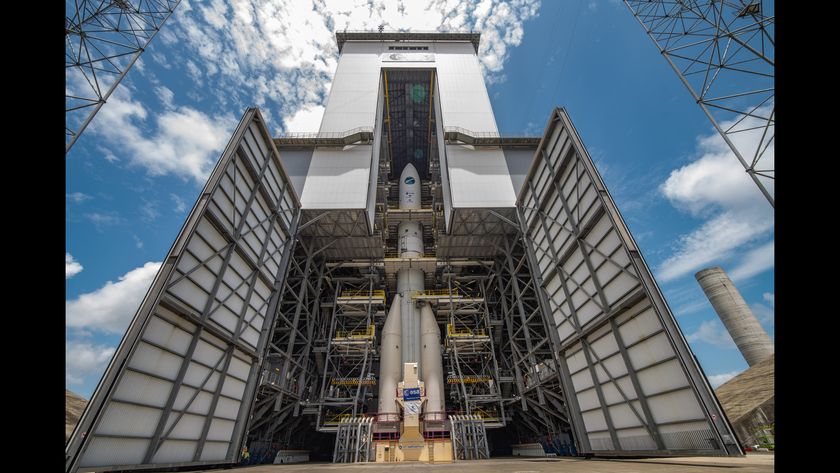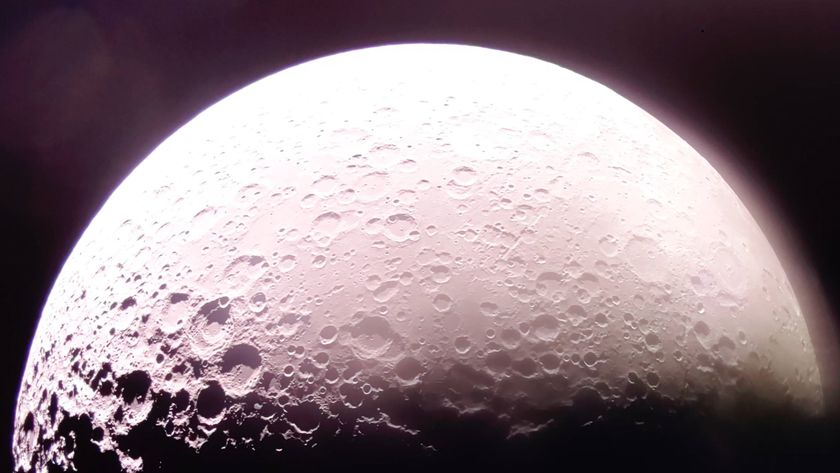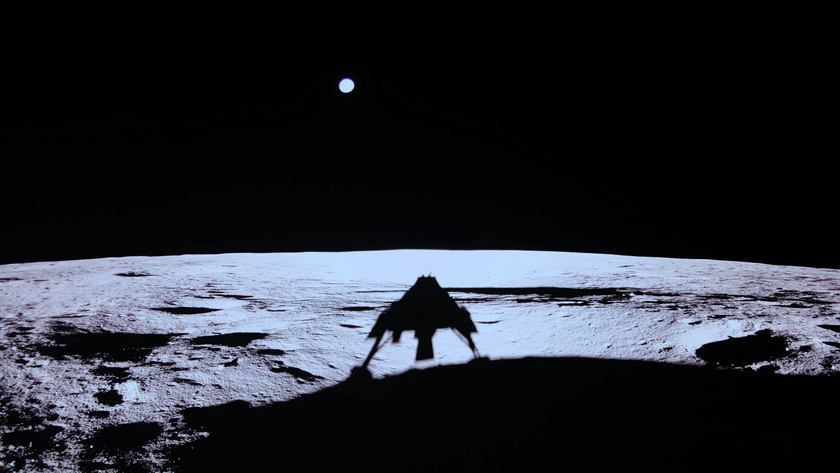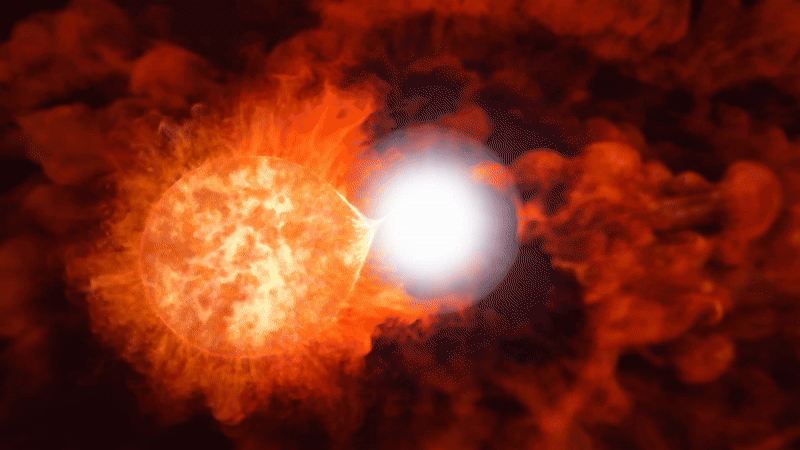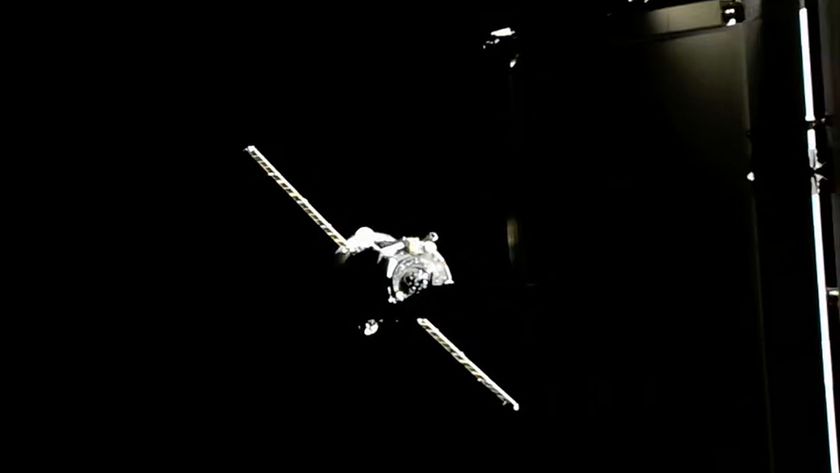'Monster' Solar Storm Erupts On the Sun

This story was updated at 10:52 a.m. EST.
The sun unleashed a powerful flare Thursday (Feb.24) that – while not the strongest solar storm ever seen – let loose a massive wave of magnetic plasma in a dazzling display.
The solar flare kicked up a huge, twisting tendril of plasma that scientists call a solar prominence. NASA's Solar Dynamics Observatory recorded the flare in an eye-catching video, with mission scientists calling the eruption a "monster prominence."
"Some of the material blew out into space and other portions fell back to the surface," NASA scientists wrote in a statement released Friday (Feb. 25). [Amazing Sun Photos from Space]
Dazzling sun flare
Thursday's solar flare was the latest in a series of strong sun storms this month. Scientists classified it as an M3.6 Class solar storm. NASA described the solar eruption as a "rather large-sized flare."
Scientists use a three-class system to measure the strength and intensity of solar flares. The most powerful sun storms are Class X – a Class X2.2 solar flare erupted on Feb. 14. Class M solar storms are medium strength but still powerful, according to a NASA description. The weakest types of solar flares are Class C storms.
Get the Space.com Newsletter
Breaking space news, the latest updates on rocket launches, skywatching events and more!
Thursday's solar flare erupted from a new spot on the sun called sunspot 1163, according to the website Spaceweather.com, which monitors space weather and skywatching events. The flare was not aimed at Earth, and so should not pose a concern to satellites or other systems.
"Earth was little affected," Spaceweather.com reported Friday. "Plasma clouds produced by the blast did not come our way."
The active sun
The sun is in the midst of an active phase of its 11-year solar weather cycle. The current cycle is known as Solar Cycle 24.
Strong solar flares aimed at Earth can disrupt satellites and power grids, as well as pose a hazard to astronauts on spacecraft. They can also spark dazzling shows of the northern lights, or aurora borealis.
The threat of solar flares to satellites and infrastructure has been gaining notice among decision makers lately. Last week, Jane Lubchenco – the chief of the National Oceanic and Atmospheric Administration – told a gathering of scientists that the United States must take steps to protect assets from potentially dangerous space weather events.
"This is not a matter of if, it's simply a matter of when and how big," Lubchenco said of the potential for a dangerous solar flare. "We have every reason to expect we're going to be seeing more space weather in the coming years, and it behooves us to be smart and be prepared."
You can follow SPACE.com Managing Editor Tariq Malik on Twitter @tariqjmalik.Senior writer Clara Moskowitz (@ClaraMoskowitz) contributed to this report.
Join our Space Forums to keep talking space on the latest missions, night sky and more! And if you have a news tip, correction or comment, let us know at: community@space.com.

Tariq is the Editor-in-Chief of Space.com and joined the team in 2001, first as an intern and staff writer, and later as an editor. He covers human spaceflight, exploration and space science, as well as skywatching and entertainment. He became Space.com's Managing Editor in 2009 and Editor-in-Chief in 2019. Before joining Space.com, Tariq was a staff reporter for The Los Angeles Times covering education and city beats in La Habra, Fullerton and Huntington Beach. In October 2022, Tariq received the Harry Kolcum Award for excellence in space reporting from the National Space Club Florida Committee. He is also an Eagle Scout (yes, he has the Space Exploration merit badge) and went to Space Camp four times as a kid and a fifth time as an adult. He has journalism degrees from the University of Southern California and New York University. You can find Tariq at Space.com and as the co-host to the This Week In Space podcast with space historian Rod Pyle on the TWiT network. To see his latest project, you can follow Tariq on Twitter @tariqjmalik.
